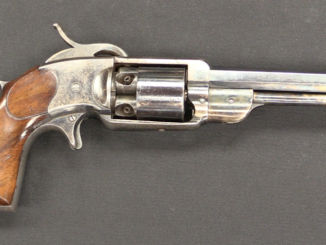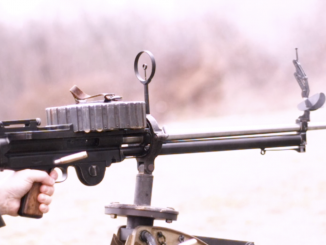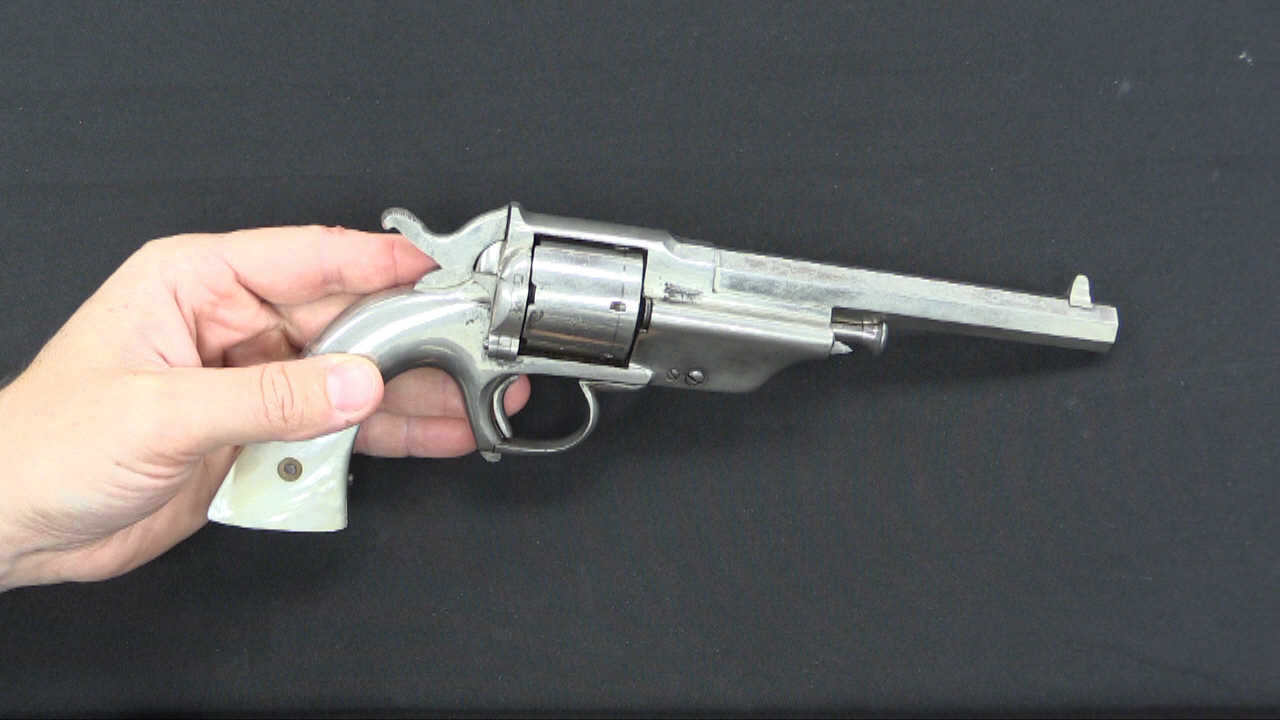Thanks to the 1 Shepherd cadre for making Midnight Brutality possible! And thanks to our excellent match sponsors:
Tactical Night Vision Company (TNVC)
B.E. Meyers Advanced Photonics
Live Q or Die
Varusteleka
Midnight Brutality was a 6-stage all-nighttime match held at the Echo Valley Training Center. It was designed to test gear and skills in a dark environment, and it was both tremendously fun and very educational. This particular night for me, more educational than fun…
This is my run through the match in Infantry division, meaning that I was using an infrared laser and infrared light. Specifically, I was using a clone of a 1980s or early 1990s Delta Force CAR-15 carbine setup. It is set up with an Aimpoint 5000 red dot, an AN/PAQ-4A infrared pulsing laser, and a Surefire 6P with an infrared filter. It also has a collar for an Ops Inc telescoped suppressor, but I didn’t have one of those on it for the match. The upper assembly was generously loaned to me by Augie Kim of TNVC (Tactical Night Vision Company), who was also our primary match sponsor.
This sort of carbine setup would be fantastic for kicking doors and clearing rooms…but it did not work well for me against small targets at long (by night standards) ranges in minimum ambient light, to put it mildly. One could also say I crashed harder than a Blackhawk over Mogadishu. The problems I had were twofold; the flashlight just didn’t give enough light for targets on the open range, and the laser dot was larger than any of the targets I had to engage.
Filming was done with a Sionyx OPSIN digital NV monocular/camera. I also used a Grec recorder on one of my PVS14 tubes to get a first-person view. The OPSIN struggled in the early stages before the moon rose and the clouds cleared a bit, but it was massively aided by my IR light. Actually, the OPSIN did a better job with the flashlight than my PVS-14s did. My test runs with the rig before the match had all been under significantly better lighting (lots of stars and some moon), and didn’t give me a proper appreciation for the setup’s strengths and weaknesses.
I completed four of the six stages, and avoided being dead last only because a couple other people also failed to complete all the stages, and one person DQ’d. It was educational, but frustrating. If I could go back knowing what I do now, I would not have chosen to use it in the match. That said, I initially tried to find a way to bring an M3 Snooper M1 Carbine with Korean-War era NV scope, and I’m very glad that didn’t work out! That rig would have been even worse…




Matches such as Midnight Brutality 2023 demonstrate what works under match conditions and what doesn’t. In other words, you won’t know until you test it out. The Good Idea Fairy strikes when nobody tests out the “good” idea.
An example that might just possibly make Forgotten Weapons is the USN’s WW2 Mark 14 torpedo (submarine launched). The Mark 13 (air dropped) and Mark 15 (destroyer launched) torpedoes shared the same flaws. Multiple naval museums have examples of these terrible trios, with their Achilles heel being their Mark 6 exploders. Due to high costs of these “precision-guided weapons” that would hit within feet of their aiming point at several miles there was no realistic testing–such as Midnight Brutality.
In fact, the Torpedo Bureau at Norfolk never even tested any of them. They simply assumed that “It’s our perfect design, so it can’t possibly fail”.
Failure reports from the fleet were brushed off as “incompetents who don’t understand our brilliant design” right up to Midway.
Then Adm. Halsey ordered test-firings against the sheer underwater rock face of Diamond Head, which showed that the steel firing pins were fracturing on impact.
Ironically, the best replacement material for the firing pins was found to be the “high-strength duralumin” used in the propeller blades of…shot-down Japanese aircraft, notably the Zero fighter.
cheers
eon
Having chased torpedos out of Newport and AUTEC working with NUSC, I am embarrassingly unaware of the Norfolk Torpedo Bureau you mention. Was this part of BuORD?
Newport, not Norfolk. Brain fart.
cheers
eon
Halsey had nothing to do with subs. COMSUBPAC (Central, North & South Pacific) was Lockwood, Christie ran the subs in the Southwest Pacific
Yawn. Fame and fortune.
From today’s standpoint, this early iteration of night-fighting equipment looks really bad, but… You have to remember the “bad old days” from before this stuff was developed; the utter lack of provision for reduced-visibility combat made things a hell of a lot worse. When the average soldier had nothing for night sights, and no real access to night vision observation gear… Gawd. You really have no idea what that was like, to lay there at night and listen to your unit get shot the hell up by people who had all that crap.
They set us up as OPposing FORces for a Force XXI test unit. Entire battalion of guys, equipped with that which was the standard for the 1980s, namely a couple of PVS-4 sights in every squad, maybe a TVS-5 for one of your bigger machineguns, and whatever night vision goggles you might have had for your drivers. Didn’t help much; it was a zero illum night, and once full dark hit around 22:00, the damn Force XXI guys started shooting up our battalion like we were fish in a barrel. Did I mention that they were only a platoon of light infantry…? With good night vision devices like the then-new AN/PVS-14 and the PEQ-whatever, they literally had the drop on us. Bastards would be 50-75 meters off outside the perimeter, and would start selectively shooting at people. It’d be “bang, beep” for about 45 minutes, a flurry of mad shooting back, and then the casualty reports would come in and you’d find out that your company was down by three-quarters of its strength… Off in the distance, you’d hear another company getting it in the shorts. That went on all damn night; the umpires were even very generous and “gave us back” a lot of our guys, re-keying their MILES gear. Didn’t help; the only thing that saved our asses was dawn, and the batteries on all the high-tech gear running out.
I think the final numbers were Force XXI: 800 kills vs. Us: 21, or so. We only had slightly less than 500 men in the field that exercise, and at least one reinforced squad of theirs got away clean.
That’s how much difference you had between guys with what was, I suppose, second- or third-generation night-fighting gear and those who… Didn’t. Shooting fish in a barrel isn’t even a good metaphor; this was more like “Dynamite fishing in a teacup”.
If I remember right, when the SF guys were explaining that stuff to me, back then, the main reason for the intermittent laser was heat; guys were burning out the lasers by leaving them on and forgetting to turn them off. The heat buildup was pretty rapid on that older stuff, and they’d burn out with a quickness, melting soldered connections on the boards. One of the Weapons Sergeants was talking about having to go in and re-solder connections on boards inside the sights when on deployment in the Philippines. A big part of the problem, he said, was that the circuit boards would get hot from the continuous laser, then they’d get fired and between the solder softening from the heat and the vibration…? Yeah; mas no bueno for the lasers.
YMMV, on that anecdote. This is from over thirty years ago, and in passing after a walk-through of an SF display they did for ROTC Advanced Camp. All of this stuff was very sexy, very high-tech, and the utmost in cutting-edge. We were all marveling that they’d managed to produce something like the laser from Terminator so shortly after the movie came out, but I suppose that the equipment was likely in development way before then, anyway, and that the movie propmaster probably had contacts or better sources than we did out in ye olde boonies of the Army at that time.
Lotta people just don’t get the lack of velocity information used to have. If you weren’t at the site they were doing the work, half the damn time, you never knew it existed…
One of the things NV and etc. designers forgot back then (and still do today sometimes) is waste heat. Electronics get hot, and you’d better have some way to get rid of that heat or Hello Unit Failure.
One stumbling block is that the standard methods of dealing with heat generated by actual shooting (radiation via air-cooling of the barrel, etc.) tends to be yet another source of heat that goes directly into the electronics. No, sticking the designator or etc. on top of the barrel handguard of the early M4 was not a good idea, no matter how “tacticool” it looked.
So you had two sets of equipment on the same platform, both generating waste heat, and they were inevitably close enough to each other for “conflict”.
I see it as one more piece of evidence that gun designers and sensor designers just don’t talk to each other. Even when they’re working for the same organization.
clear ether
eon
“(…)second- or third-generation night-fighting gear(…)”
What is this? I always though infrared vision is divided into active and passive, was this division found wrong and abandoned in favor of above-mentioned?
There are 3 generations of image intensifier technology
First generation used a metal coating on glass for photocathode and a an anode with a hole in it half way down the tube that acted to accelerate the electrons and as a pinhole or a lens to focus them on the phosphor screen at the back
they were bulky and didn’t give a huge amount of amplification, so it was usual to string two or three in tandem to achieve the needed amplification, hence the huge sights that looked more like a sports photographer’s telephoto lens.
The metal cathode was also very fragile, expose it to direct sunlight or even a powerful torch and you’d kill it.
second generation introduced a wafer with lots of channels for the electrons in the middle, instead of the single aperture, that allowed a big reduction in length and bulk, and it allowed much higher voltage for amplification without risking a spark or a big cascade of electrons to occur. second generation tubes gave enough amplification to be used alone for most uses, rather than strung in tandem.
Third gen introduced a photocathode that was incompatible with the phosphor at the back of the tube (some sort of arsenide or something like that) and a wafer between the two ends of the tube to stop the two mixing.
the technology for making third gen was not allowed outside America, so European makers kept on developing second generation, and had some second gen plus tubes that would out perform third generation.
there were also some solid state sensors that had amplification within the pixels, that gave performance only slightly behind second or third generation intensifier tubes, without the bulk or fragility
they were also not subject to any of the end user restrictions that apply to intensifier tubes.
Making the photocathodes was something of a black art. they were optimised (I don’t know how) for max sensitivity in the near infra red, where most of the radiation on a night time battlefield was expected to occur.
Sometimes that didn’t work out and tubes with max sensitivity in other parts of the spectrum were made, rejected and sold off for non military use.
I was unintentionally confusing there, and kind of invented something that isn’t defined very well. There are “generations” to image intensifier tube technology that Keith has graciously stepped up and laid out very well.
However, what I was getting at was something that’s only kinda in the back of my mind, and more related to “tactics, techniques, procedures” stuff. Night-fighting has had definite progressive generational “waves” as technology and concepts kept improving. How we think about it has changed, as well…
Gen 0 would be the sort of night-fighting stuff that we did before technology came along to help things out. The Japanese did a lot of this before WWII, and we paid lip service to it, as well. The Japanese history of night combat is something that really needs to be looked at, because they did things way differently than we did, with a lot more success and tactical effect.
Gen 1 was our reaction to that experience in WWII. This stuff was mostly about defense; you had your heavy IR-based lights and metascopes, and were hunkered down in defense positions, waiting for the enemy to come to you. Things like the German Vampyr and the M2 Carbine that we slapped the IR stuff on top of sort of typify this level.
Gen 2 was passive night vision that we issued out to select specialists. The early PVS-2 scopes that were damn near as big as the rifle were typical here; you can start to see where the idea of using the scopes as more than just observational tools began to transition out into more active measures. These systems gave you good insight into how much difference they could make; this was cutting-edge back around Vietnam time frame.
Gen 3 was where we started mass-issue of things like night vision goggles, and things really started to take off, in terms of “Let’s use this stuff to take things to the enemy…”, and once enough “stuff” got out there and allowed experimentation, things really began to change. I forget the exact sequence, but some bright light recognized that you could tape an IR designator onto a rifle, wear night vision goggles, and life as an attacking soldier at night would become pretty much Predator in real life.
Where we’re at right now is at the transitional point between Gen 3 and Gen 4, where the technology is so damn ubiquitous that we’re likely to start issuing everybody full-color night vision goggles as basic issue items. The whole thing will be seamlessly integrated into synthetic awareness applications and be entirely invisible to anyone who doesn’t stop and notice it all.
So, in terms of what I was talking about… Gen 0? Nothing, nada, not a damn thing in terms of “night aids”. Gen 1? Observation and defense applications. Gen 2? Specialist tool, low-volume issue, low-volume utility. Gen 3? General issue item with way more tactical effect than before. Gen 4? Ubiquitous and integrated; people don’t even think about night being any different from daylight hours.
Like I said, this is just how I think about it. Not anything official, or agreed-upon. I think there’s something to be said for looking at things in this manner, because it ties in with the tactical effects we’ve seen on war.
I’d better be more specific about the metal photocathodes
they were combinations of Sodium, potassium, ceasium etc, deposited from vapour, as a layer a few atoms thick on the inside of the glass window at the front of the tube.
exposure to any bright light would permanently damage or destroy the photo cathode. it also deteriorated through use.
I don’t remember how the photocathodes were optimised for certain areas of the spectrum – I only remember that sometimes it didn’t work properly.
I’m not actually sure whether it was the cathode, the phosphor screen, or both that could become permanently imprinted with an image, if it spent too long looking at the same thing.
I think it was both, remember back in the stone age when computers had those big heavy cathode Ray tube boxes with tiny screens, and we had “screen savers” to stop them getting images burned into them?
there were tales of retired image intensifiers being destroyed because they had the image of something sensitive, like a nuke bunker, burned into them.